The Puschmann Timpani
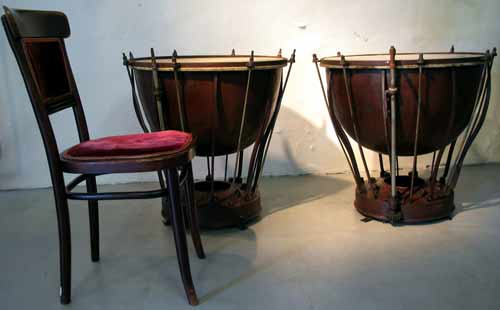
Here we have a view where you can see the size of the instruments. Compare them with the chair in front and note they are about 15 centimeters less tall compared to modern timpani. The original Puschmann Timpani where invented in 1880.
In the next picture I have a drawing from the book "Die Pauke" by Herbert Tobischek. Published by Hans Schneider in 1977.
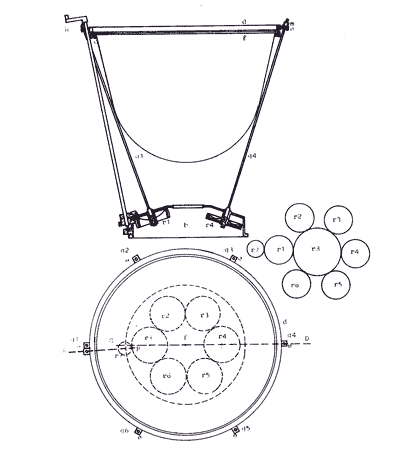
This is the original design for the Puschmann Timpano. The tensionrods go all the way down to the base of the instrument where the rod is connected to one of a series of 6 cog wheels. The 6 cog wheels are connected. The top of the tension rod has a screw thread that runs into a large bolt at the other side of the tension hoop. It is good to realise that the tensionrods are turning in opposite directions because the 6 cog wheels are also connected and can never rotate in the same direction. This means that the threads themselves have to be reversed on every other rod, in order tho keep all the six rods having the same effect on the tuning! What I have described here is related to the layout in the picture right at the bottom.
The cog wheel layout that can be seen to the right in the center is probably an improvement that solves the problem of the rods rotating in opposite directions.
Still another solution is possible, and that can be found of the pair of timpani that I found in the "Vughts Historisch Museum"
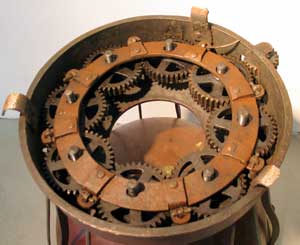
As we can see on this photo a large metal ring is attached to the cog wheels by means of a short rod with a screw thread. When the cog wheels turn around, this ring is moving away or towards the cog wheels. The screw threads still have to be in reverse for every other rod, but this in itself is not a problem.
As you also can see there is a connection strap exactly between the cog wheels, and to this strap it is that the major tension rod is connected. Now it is much easier to tune the timpano, as all the rods move up/down instead of turning in opposite directions.
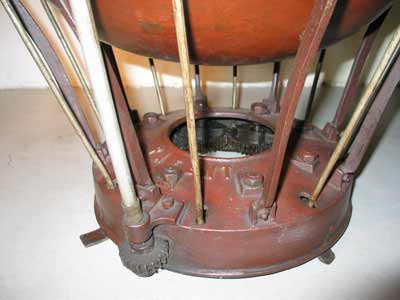
On this view of the base of the timpano the master tuning handle (with the small cog wheel) is easy to see as well as the tension rods protruding out of the base plate.
Note that this instruments have 8 tension rods instead of 6.
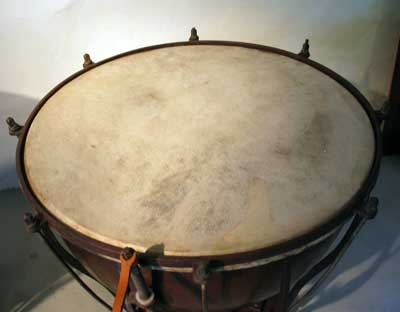
Here we see a topview of the larger of the two timpani. The heads are of calfskin.
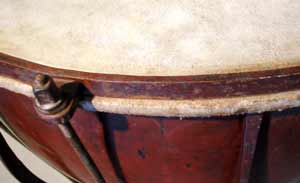
In this close-up view we can see that the tension hoop is attached directly to the head, there is no flesh hoop as in modern timpani.
Finally one more overall photo that gives a good impression of the style of the instrument,
the beautiful curve of the kettle (which is free floating!),
the construction and the size.
